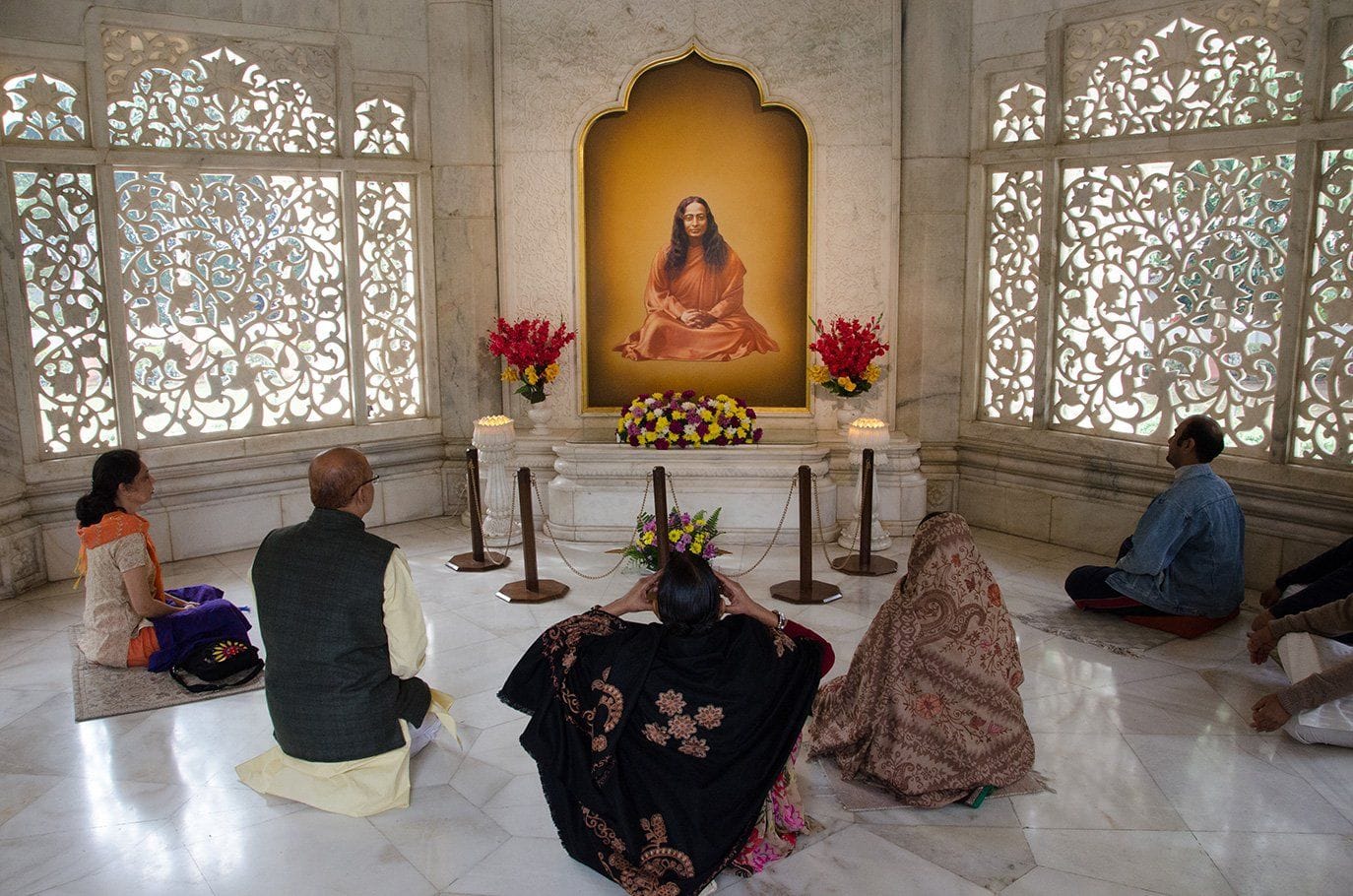Lahiri Mahasaya, often referred to as the “Householder Yogi,” stands as a pivotal figure in the revival and dissemination of Kriya Yoga in the 19th century. Born Shyama Charan Lahiri on September 30, 1828, in Ghurni, Nadia district (present-day West Bengal), India, his life story intertwines the ordinary with the extraordinary, demonstrating the potential for spiritual realization within the context of everyday life. This article explores his life, teachings, and enduring legacy, offering a balanced perspective that considers both historical accounts and the spiritual reverence surrounding his name.
Early Life and Spiritual Awakening
While many hagiographic accounts exist regarding Lahiri Mahasaya’s early life, historical details remain relatively scarce. What is generally accepted is his birth into a Brahmin family to Gourmohan and Muktakeshi Lahiri and his subsequent career as an accountant for the military. This seemingly ordinary life took a dramatic turn in 1861. While walking in the Himalayan foothills near Ranikhet, at the age of 33, he reportedly heard a voice calling his name. Following this mysterious call, he encountered Mahavatar Babaji, a figure shrouded in legend, described as an immortal yogi possessing profound wisdom. Some consider Babaji a mythical figure, while others believe him to be a real, highly advanced spiritual being. This remains a topic of debate among scholars and practitioners.
This encounter initiated Lahiri Mahasaya into the ancient practice of Kriya Yoga, a technique believed to have been long hidden or lost to time. This pivotal moment transformed the householder into a spiritual teacher, entrusting him with the mission of reviving and sharing Kriya Yoga with the world. You can explore the profound teachings of another influential spiritual figure, Meister Eckhart, and his mystical insights in our companion article Meister Eckhart Philosophy.
The Essence of Kriya Yoga
Kriya Yoga, as taught by Lahiri Mahasaya, emphasizes pranayama, or breath control, as the core of its practice. It involves a series of breathing techniques, meditation, and postures designed to awaken and channel the life force within. Unlike many traditional yoga paths that required renunciation of worldly life, Lahiri Mahasaya’s approach made Kriya Yoga accessible to householders, integrating spiritual practice within the context of family and professional responsibilities. This unique aspect of his teachings resonated deeply with people seeking spiritual growth while navigating the complexities of daily life.
Lahiri Mahasaya’s teachings also included commentaries on scriptures like the Bhagavad Gita, offering insightful interpretations that bridged ancient wisdom with contemporary understanding. He emphasized the importance of personal responsibility and social harmony, encouraging his students to be active and engaged members of their communities.
Lineage and Legacy
The lineage of Kriya Yoga, as passed down through Lahiri Mahasaya, traces back to Mahavatar Babaji. This lineage continued through key disciples like Yukteswar Giri, who later became the guru of Paramahansa Yogananda. Yogananda played a crucial role in introducing Kriya Yoga to the West through his seminal work, Autobiography of a Yogi. This book, published in 1946, became a spiritual classic, capturing the attention of a global audience and significantly contributing to the widespread interest in Kriya Yoga. Lahiri Mahasaya’s legacy, therefore, extends far beyond his lifetime, continuing to influence spiritual seekers across the world.
Lahiri Mahasaya’s death, or Mahasamadhi, occurred on September 26, 1895, in Benares (Varanasi). Following Hindu tradition, he was cremated at Manikarnika Ghat, a sacred site in Varanasi. Cremation, in Hindu belief, symbolizes the liberation of the soul from the physical body. While some might seek a physical burial site, his true legacy resides in the living tradition of Kriya Yoga.
The Miracles of Lahiri Mahasaya
Numerous accounts attribute miraculous events to Lahiri Mahasaya, including bilocation (being in two places at once), healing, and materialization. While these accounts are often presented with reverence within Kriya Yoga traditions, it’s important to approach them with a balanced perspective. Some may interpret these stories literally, while others view them as metaphors for spiritual potential. It’s also important to consider that historical records from that time may not meet modern standards of documentation.
Whether viewed as literal occurrences or symbolic narratives, these stories likely served a purpose within Lahiri Mahasaya’s teachings. They may have been intended to inspire faith in the transformative power of Kriya Yoga, demonstrating the potential that lies dormant within each individual. However, Lahiri Mahasaya himself was reportedly cautious about overemphasizing these miracles, concerned that they might distract from the core principles of spiritual growth through dedicated practice.
Further Exploration
The study of Lahiri Mahasaya and Kriya Yoga continues to evolve. Ongoing research and scholarly discussion may shed further light on the historical context of his life and teachings, offering deeper insights into the nuances of this influential spiritual tradition. It’s important to recognize that different lineages and interpretations of Kriya Yoga exist today, reflecting the evolution and adaptation of these practices over time.
By understanding the historical context, core teachings, and enduring legacy of Lahiri Mahasaya, we can gain a richer appreciation for his contributions to the world of spirituality. His emphasis on integrating spiritual practice with daily life continues to resonate with modern seekers, offering a path towards self-realization that is both profound and practical.
- Georgia Platform: A Southern Strategy, 1850s - March 31, 2025
- How many weeks is 40 days: Quick Conversion Guide for Accurate Results - March 31, 2025
- How many feet is 300 meters? 984 Feet: Understand Length Conversions Easily - March 31, 2025
















